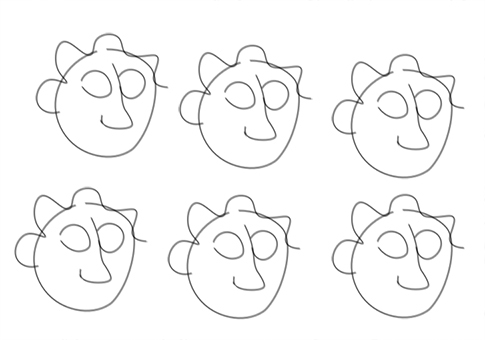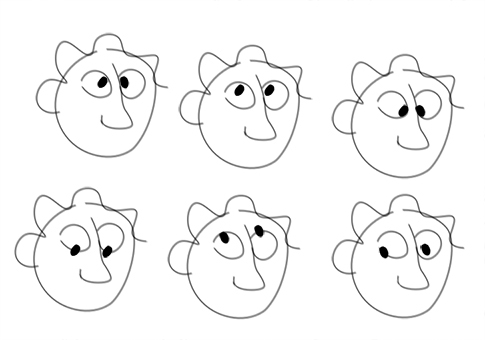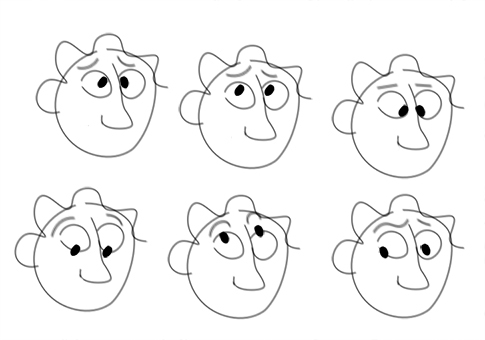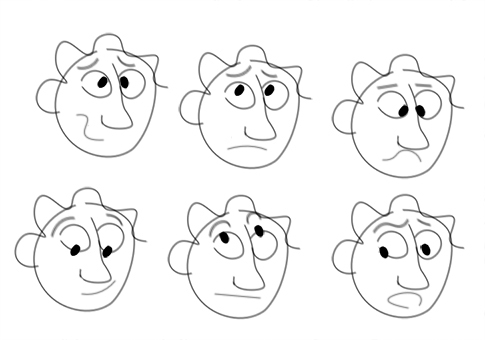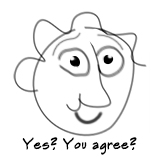Cartoon Sketching: Identifying emotions
My Action Sketching Blog discusses how cartoons (outlines) are used to draw difficult-to-see body motion. This blog, Cartoon Sketching, discusses how to create cartoons for use in comedy and fantasy.
The commonality between all funny and fantastic art is showing character emotion, be those characters realistic, abstract, crude, a life-form, or mechanical. That emotion is shown through a face of some type, usually depicted through the eyes, eyebrows, and mouth.
If you have not yet started cartooning, I recommend you study words that define emotions, such as in the list below:
Emotions and Perceptions: Admiration – Adoration – Aesthetic Appreciation – Amusement – Anxiety – Awe – Awkwardness – Boredom – Calmness – Confusion – Craving – Disgust – Empathetic pain – Entrancement – Envy – Excitement – Fear – Horror – Interest – Joy – Nostalgia – Romance – Sadness – Satisfaction – Sexual desire – Sympathy – Triumph
Next, make a series of simple facial drawings upon which you can test your emotion-depicting skills. Rather than laboring over character development, consider making one simple face, multiply it, then print it out for practice sessions. Here’s an example:
Make several copies! Next, take a few copies, draw in eyeballs in every position possible.
Analyze what each set of eyeballs tells you about the character in terms of emotion and intent. Label the drawings with your observations, and then duplicate these pages for the next step.
Draw eyebrows on your previously finished pages. Take time to reflect on how much eyebrows changed the meaning of each “face.”
Duplicate of your eyeball-only faces and add mouths. Again notice how much you changed meaning.
Note that each element you randomly add changes the expression.
Depict Specific Emotions:
Next, start from scratch with plain eyeball-less faces and see how many drawings you can make for each emotion listed at the beginning of this article. As you draw, you’ll understand expressive patterns that you can use in your serious art as well as for your comic work.
Keep your drawings simple, but practice as much as possible. Ask friends to respond to your work by telling you what emotions they see in your drawings. The more they “get it,” the more confident you’ll become with your own drawing, observational, and expressive skills!
Links:
- Google Search: Drawing cartoon expressions: Note that while seeing how other people do this, it is best that you develop your own reference images.
- Cartoon Fundamentals: Create Emotions From Simple Changes in the Face. by Carlos Gomes Cabral. September 2013
- Learn to Draw Cartoon Faces With Simple Shapes. By Shawn Encarnacion. Updated May 2019. I like this article because it discusses how to express emotion without going into how to develop comic or action-type figures. Even a superhero, for example, can be sad. It is up to you to understand how sadness is displayed.
- Exaggerated cartoon expressions? Aargh. By Alison Beere. This is a short article with good suggestions. Alison also gives art lessons and personal training.
Author:
This article was written by Karen Little as part of an ongoing series of blogs on Action Sketching. Published on Littleviews.com. January 10, 2020.
Reproduction of this article is free to non-commercial websites (or other media) with permission and attributes to Littleviews.com and the article’s author.
All material on Littleviews (with noted exceptions) is copyrighted on the date of publication.
Questions? Ask Karen Little at karen@littleviews.com.
Please Support Our Mission:
We encourage people to participate in sketching, whether by themselves or in groups, knowing that what they sketch reveals the truth about form and motion.
Shop at our online store, Sketch-Views.com, for originally designed merchandise.
